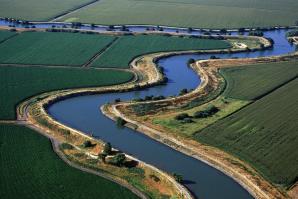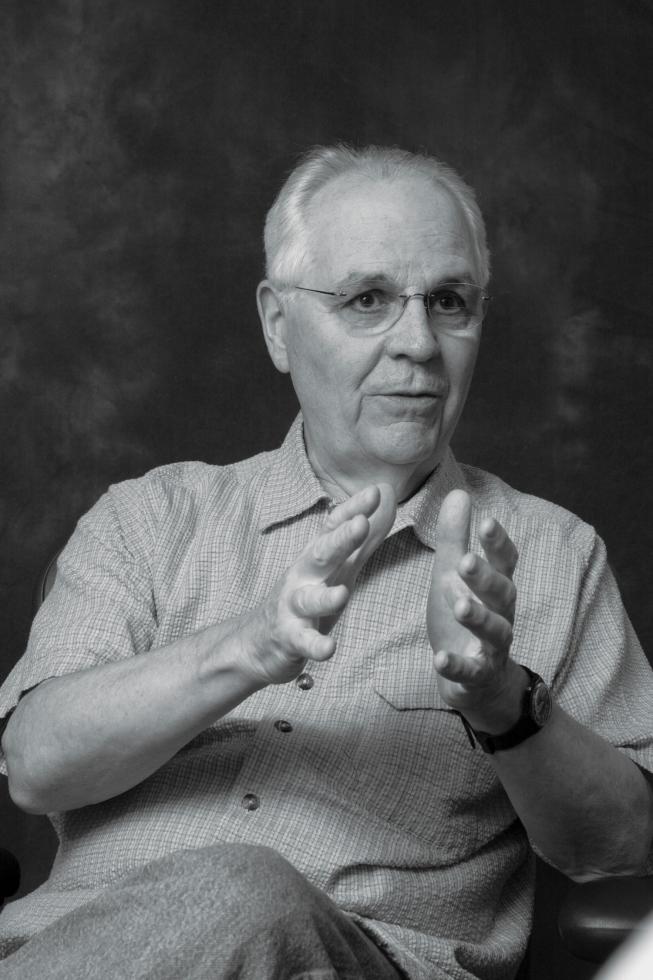When Gov. Arnold Schwarzenegger put together the Delta Vision Blue Ribbon Task Force in 2006, he knew he would need a strong, respected leader to find practical solutions for reforming the state’s archaic water system. It probably wouldn’t hurt if that person had strong roots in Northern California, where the bulk of California’s liquid gold resides. By all accounts, the governor found both in Phil Isenberg, a longtime environmental advocate and former Sacramento mayor and state assemblyman. We sat down with him recently to talk about the state’s efforts to bring its water system into the 21st century.
Comstock’s: Given the (political) differences
that we know are in play, are you optimistic that we will have a
comprehensive water reform package this year?
Isenberg: For the two years that I’ve led the governor’s task
force, [I’ve] said there’s a 10 percent chance of success. When
I’m optimistic, I’ve said 20 percent. I must confess this year I
got to 30 percent because Sen. Darrell Steinberg really pushed to
present the issues in a consolidated way. But I’ve never been
convinced that 2009 is much different than the past 160 years
that we’ve been battling about water in California. There are
some things that are coming clear, but they don’t automatically
lead to resolution of the issues. They lead to a sense of
desperation of interests and regions and everyone else, and that
just makes people terrified of any change.
Comstock’s: I’ve been told by various people that we
are not that far away from agreement on most of the major issues,
other than the proposal for a new peripheral canal. Do you agree
with that assessment?
Isenberg: No, it’s a typical insider view of what an issue
actually is. In the classic business sense of the word, this
problem is all about supply and demand. If you start there, you
learn a bunch of things none of the debaters really want to talk
about. We’ve got 126 years of reported precipitation records in
the state, and the fact is that the water supply in California is
static. If you don’t understand that, you don’t understand
anything. We’ve got a lot of water, but it comes on an irregular
basis. Everyone knows that intellectually, but they think it
doesn’t matter. Well, it does matter immensely because people
want the same amount of water in wet years, in average years and
in dry years. They want it all available all the time, but there
is no system we could create that could make that happen and get
us through a prolonged drought unaffected. That is a major
disconnect. I’ll give you an example: Four days before we
finished the final Delta Vision report, the water board sent us a
fact sheet on water rights in California. If you add up the
approximately 6,300 water permits issued in this state, they
exceed the average annual flow in the Delta watershed by 8.4
times and exceed the highest record flow level by three times.
Comstock’s: Some people counter that, even if
that is what those permits allow, nobody in their right mind
really thinks they’re going to get that, and you are in essence
saying water managers don’t have enough common sense to know what
the realities are.
Isenberg: Then let me ask you a question: What water district
in California has ever said, “Although we contracted for 100,000
acre-feet, we’ve only ever taken 40,000 acre-feet, and that’s all
we’re ever going to take forever?” Do you know any water district
that has ever said that? The answer is of course not. They ask
for more than they currently need by a lot because they’re
hedging against the future. If you have a system that promises
more water than nature delivers, I don’t care what these water
managers say to you in private, not one of them will sign a
letter to the state water board saying, “We surrender the
excess.”
Comstock’s: Are you optimistic there will be a
new conveyance built of some kind?
Isenberg: Yes, when the governor asked us to take a look 30
years out or so and see the future, there was not any doubt in
our minds that an improved Delta conveyance system is in the
future.
Comstock’s: Given the likelihood that
legislation is passed and the governor signs it right away, we
know the next day lawsuits are going to be flying. …
Isenberg: Oh yes, do nothing, or do something; there will be
50 lawsuits.
Comstock’s: How long do you think something like
this will actually take?
Isenberg: The idea of transporting water from the Delta came
from a state study in the 1870s. From that, it took 70 years to
start construction of what’s now the Central Valley Project. The
State Water Project was narrowly approved by the voters in 1960.
So anywhere between now and 30 to 50 years from now, you’ll find
changes happening.
Comstock’s: You mentioned supply earlier. New
storage advocates often refer to dams and reservoirs as a way to
get new supply. Is there such a thing as new supply?
Isenberg: The old theory of water is that new supply is when
you go out and find water that no one is using. For example, we
used to say that water that flows from the Sierra into San
Francisco Bay serves no purpose. We know of course now that it
serves a vast environmental purpose, but the theory was if human
beings don’t use this water, it’s wasted. But the bottom line is
that there isn’t any unused water supply in the state of
California that somebody can just take with no damage or at no
cost — either economically, socially or culturally — and pretend
that it’s new. You can more efficiently use the water you have,
or as some of the engineers colorfully say, you can squeeze the
washcloth and get a slightly more reliable supply by reducing
demand. But of course, the one thing politicians and water
managers like to do the least is tell voters they have to pay
more or use less. In California we’re approaching the fourth dry
year and people are still complaining that they can’t wash their
cars whenever they want. My head hurts.
Comstock’s: What happens if we don’t get a
reform package done this year?
Isenberg: You will see continued pressure on fish species in
the Delta and increased intervention by the federal government in
regard to water exports. They will also likely make more
mandatory species-by-species restrictions, which is an absolutely
insane way to manage an ecosystem. You will also see an
acceleration of the bitter conflicts between regions within the
state, and not just between Southern and Northern California, but
among water districts, sanitation facilities and in-Delta water
users within this region. On the positive side, you will also see
even greater voluntary conservation efforts statewide.
Comstock’s: The Obama administration has become
a player in this fight. Is that good or bad?
Isenberg: First of all, it’s not clear exactly what the Obama
administration is saying. Nor is it clear what people are
hearing. A lot of people want to believe there will be a vast
amount of free federal money coming here for us to do whatever we
want with. I rate that very low on the probability scale. We may
get money, but in the short term it can only fund the projects
that are already in the pipeline. It can’t fund a canal or more
dams because those are at least a decade away. Either way, it
doesn’t constitute what we really need, a cohesive and modern
state water policy.
Recommended For You

Engineering Solutions
Flood risk reduction in the real world
Although the United States Army Corps of Engineers is the largest public engineering, design and construction management agency in the world, most Americans identify it with flood protection. This is particularly true in the Sacramento Region, where the Corps is heavily involved in virtually every major flood control system.

Changing Tide
Turf and money battles continue over California water reform
It’s been about 20 months since lawmakers and former Gov. Arnold Schwarzenegger breathlessly announced a historic agreement called the Sacramento-San Joaquin Delta Reform Act of 2009, an ambitious plan to overhaul the state’s antiquated water system. Much has changed since then, but much more is still on the way.



